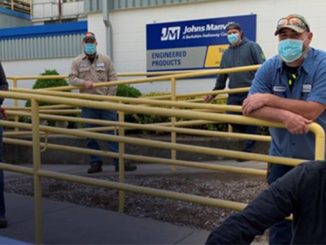
The federal government spent the better part of last year formulating and negotiating a climate change plan it hopes will bring Canada to the global forefront as an environmental leader. The plan includes action to address and implement objectives established at the Paris climate talks, and concrete measures to meet ambitious GHG emissions targets by 2030. The worry, however, is increased monetary costs and whether the depleted costs to the planet are outweighed. Its success hinges on all province’s participating, and while some have jumped on board, others are holding out for a better deal.
The Pan-Canadian Framework on Clean Growth and Climate Change will allow the country to meet its goal to reduce GHG emissions by 30 per cent over 2005 levels by 2030. It includes efforts to eliminate coal-fired power, a plan to reduce the carbon content in motor fuels, investments in renewable energy and electricity projects, and support for clean technology and energy efficiency measures. One of its most controversial components is its mandatory carbon pricing.
The plan requires provinces to implement some kind of carbon pricing measure—cap and trade or carbon tax. Ontario and Quebec are already signatory to a three-way cap and trade agreement with California, and BC has had a carbon tax for nearly ten years. Alberta is also implementing a carbon tax, while other western provinces have withheld agreement.
In Manitoba, Premier Pallister has indicated he may be willing to sign if the federal government allocates additional funding to that province’s healthcare budget. In Saskatchewan, Premier Wall has withheld completely, in total disagreement of the plan’s principles on account of perceived harm to the province’s primary industries.
To be successful as a long-term economic generator, the plan is going to have to withstand negative pressure from the opposition and some industries, who purport it will simply cost too much to implement. Under Ontario’s current plan, for instance, residents pay approximately $13 more each month to fuel their vehicles and heat their homes. Once carbon tax reaches $50 / tonne in 2022, these costs in Alberta, for instance, will increase significantly.
Supporters of the Pan-Canadian Framework say the money spent now is an investment into Canada’s long-term economic health as a leader in clean energy production. Proceeds go back into helping families and residents implement energy saving measures. As companies and private citizens adjust to carbon pricing and make amendments to their energy use, they will actually save money, say supporters, while securing Canada’s place in the global economy for clean energy.
For industries that support or supply clean energy, and for trades like mechanical insulation, which can help companies reduce their energy use and emissions, there is tremendous possibility by way of work in renovation and new build industrial markets.
Steve Clayman, director of energy initiatives for TIAC, said from the federal perspective, it is definitely important the government is recognizing the implications of reducing carbon emissions. “From a code perspective, it is an incremental thing and when they aggregate it throughout the building system performance it reflects in the latest building codes,” he said.
From the mechanical insulation industry’s perspective, it is a push for higher energy efficiency and greater insulation thicknesses, which is also a benefit and every little bit helps.
“In the US, the Department of Energy has passed regulation for all these little bits and pieces of electrical items we all use – for example, humidifiers and air conditioners – and all this stuff seems tiny when you look at it individually, but by the millions the impact is significant.”
His analogy points to the value in Canada, which only produces two per cent of the world’s GHGs, taking such an aggressive approach to mitigating its impact on climate change.
“Why should we bother when we only produce two per cent of the world’s GHGs? Any one person can say, ‘Why should I bother with this tiny air conditioning machine,’ but if there are millions of appliances in millions of buildings, it adds up.”
Insulation manufacturers may be eligible to participate in the cap and trade system, depending on the company size and emissions count. Contractors and distributors – especially smaller companies – are likely to experience dramatic increases in energy costs—the media offers plenty of examples of businesses in Ontario experiencing astronomical energy price increases, to the extent they are considering moving to the US to afford to do business.
At the same time, a decade’s worth of data from BC shows carbon tax has been successful. Rather than kill jobs, as was the original criticism, the tax has helped BC foster an economy that prospers in a low-carbon environment. Despite BC’s carbon tax growing from $10 / tonne to $30 / tonne over the last nine years, the province has Canada’s lowest personal income tax rate, one of the lowest corporate tax rates in the country, and the province’s GDP has outshone the rest of the country’s since 2008 when the tax was implemented.
Historically, Canada has implemented environmental policy with competitiveness in mind, meaning it typically establishes tax breaks, incentives, rebates, and other measures to mitigate cost changes resulting from these types of changes. Government on all sides of the issue is hoping for the same as Canada moves forward with the Pan-Canadian Framework.
For more information and to follow its development, please visit climatechange.gc.ca.



